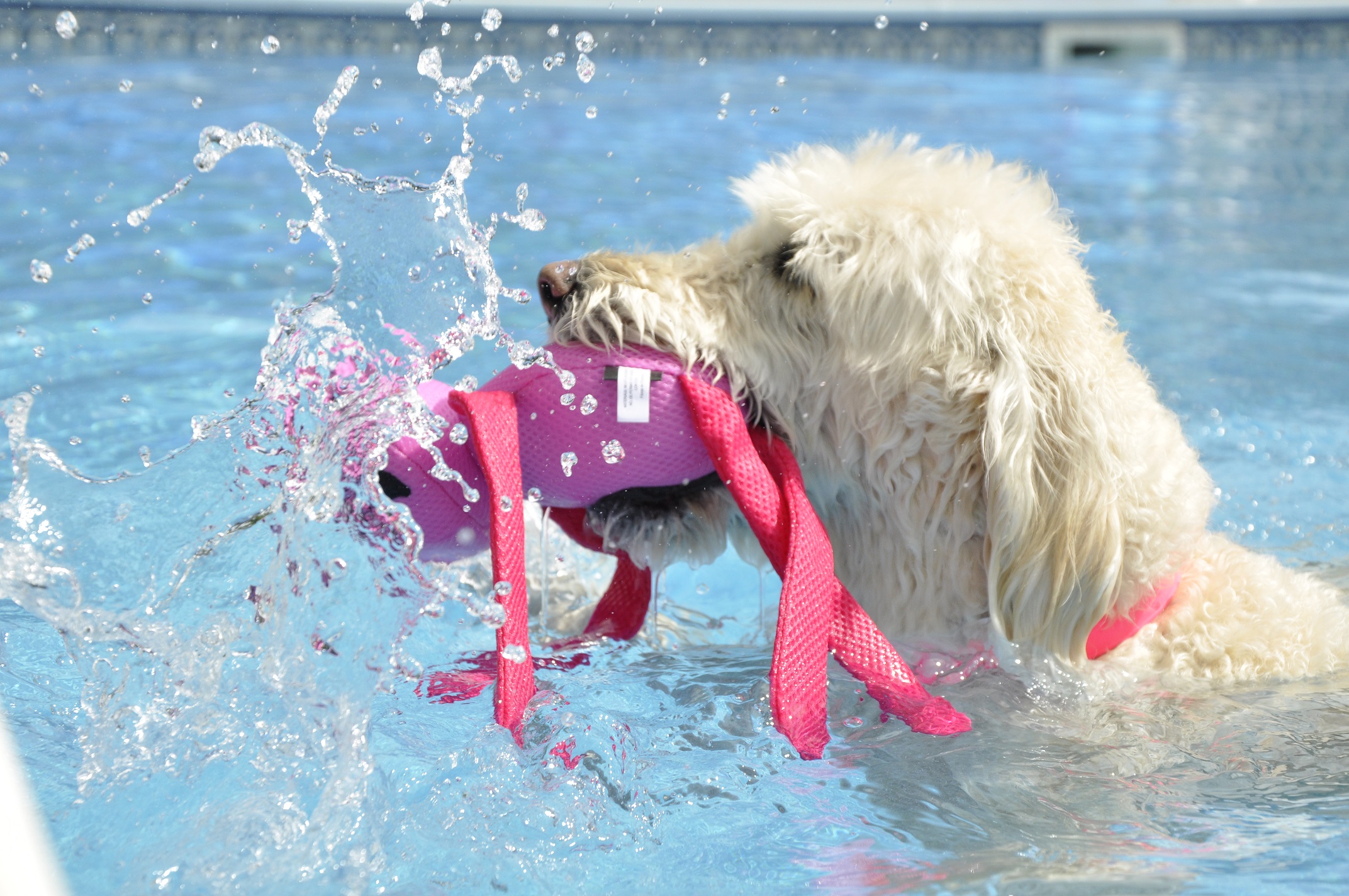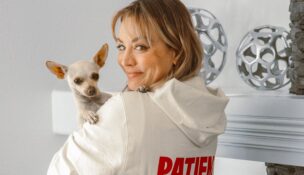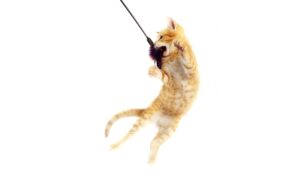The Real Toy Story
Alexandra Wepner //March 1, 2017//
Gone are the days when a fallen branch from the backyard was enough of a plaything for the family dog—and even more, pet toy sales are nothing to shake a stick at. Across all categories of pet, toys have become a staple seller for many retailers, and the variety of features has grown to a range unimaginable by many who remember the pet industry of yesteryear.
“Nowadays, you have to come up with more ideas, you’ve got to figure out a better way to value engineer it, and it’s all about removing costs, but still keeping things that are very interesting,” said John Gerstenberger, a product development and sourcing professional at Ware Manufacturing, Inc. “We find that the conception point with what you’re having to create is much more important because pet parents today want original ideas. They’re buying new toys every two weeks, every month.”
A recent study from Packaged Facts evaluated the landscape of the pet toy segment of the industry—from “simple rubber and rope toys to high-tech items designed to help keep the pet active and entertained while the owner is away, in addition to cat scratchers and play furniture.”
According to the report, dog and cat toys comprise 28 percent of the overall durable pet care products market and racked up retail sales of approximately $1 billion in 2016. Those earnings are expected to grow by a forecasted 3 percent compound annual growth rate (CAGR), as a CAGR of 4 percent was observed between 2011 and 2016.
But how do pet toys make their way to retailers’ shelves? Surely, industry players are aware of the weeks, months or even years that it sometimes takes for products to finally reach the market. But a bird’s eye view of the process reveals emerging trends, best practices and shifts in the industry—the knowledge of which would benefit any pet professional.
Born from an Idea
Of course, not all pet toys are made the same way—that is, not all ideas are formed in the exact same manner. From in-house design departments to independent product design firms, and even in the minds of brand owners, there are a number of ways that the idea for a pet toy can be born.
Mario Esquer is the president of Avadium Designs, a firm that works with some of the pet industry’s biggest players to bring product ideas to fruition.
“We’ve been in business since 2009, and we help manufacturers, inventers and companies with their ideas,” Esquer said. “We’ll take something new and unique, like dog toys, and from there we usually go through a process of new ideas, starting with sketches and concept rendering to create different ideas and characters.
“From there, we refine the product with different variations, color studies, and we’ll go back and make mock-ups,” he continued. “For the rest of the process, if there’s any engineering to do with rubber toys and plastic, we use 3D printing to create toys very quickly and see what they look like. You get feedback, testing and market studies and then we generally go back and refine those ideas.”
On the other hand, several manufacturers have in-house departments that generate product designs. Gerstenberger described the toy design process by Ware Manufacturing, Inc, to include many of the same steps of those at Avadium Designs, though most of Ware’s design process happens within the company. Ware produces a range of toys and accessories for dogs, cats and, more uniquely, birds and small animals.
“Product development is really a multi-step process where you have the generation of an idea, you’ll do some type of mock up on the computer, and then some mechanic-type drawings that you will then screen and market test that idea,” Gerstenberger said. “Then you apply a little more of the business analytics to it: is this going to make sense, can we make money off it, can we do it? And then you get into the true product development side, which is sourcing, trying to take quality assurance in, engineering it to try to make it better and better and at the same time as that doing a lot of packaging development.”
For manufacturers who make products for several pet categories, the development stages vary. Coastal Pet Products makes toys for cats, such as the Turbo Scratcher and Catnip Hurricane, as well as for dogs, like the Rascals mesh toy collection.
“Dogs and cats have unique individual characteristics, and we want to make sure we take this into consideration when we are developing a toy,” said Kirk Dixon, category director at Coastal Pet Products. “We have the same overall process, but we want to call out product features specific to the animal and type of play. For example, dogs tend to play more aggressively with toys so the materials and test protocols will be different than for a cat.”
Many brands even combine the two avenues into one, exchanging and molding their own ideas with the help of outside influences, both professional and consumer. Petmate, maker of toys and other products for dogs, cats and birds, has an extensive design process utilizing published research from think tanks like Packaged Facts, design firms, insight from retail partners and consumers (via social media and their website, among other venues) and even an open channel for inventors to submit their ideas, according to Chris Wilson, executive vice president of marketing and product development. Their brands include Jackson Galaxy, MuttNation and JW Pet, to name a few.
“Insights are combined with product, pricing and retailer strategies to help formulate each year’s product plan,” Wilson explained in an email. “We ideate and generate concepts internally with our in-house design team as well as utilize a network of outside design resources both domestically and with our vendor partners in Asia… We find it is best to cross-pollinate your internal views with outside influences. If we do not have the internal expertise we will utilize outside engineering support as well.”
Of course, many outsiders might be surprised by how organically many product ideas are formed.
“Sometimes it’s direct communication with the customer—they may call us directly and say ‘Hey, you came out for this meeting and I just want you to know this is something we were thinking about,’” Gerstenberger said. “But the one I enjoy the most is the one I call ‘animal inspiration.’ All of us around here own pets, and it’s amazing when you’re looking at your own pet and you’re taking care of something one day and you’re like, ‘This is a pinch point for me.’”
The Next Phase
Following the solidification of the idea for a pet toy is the manufacturing and distribution
process. According to Gerstenberger, manufacturers often maintain a close working relationship with factories during this process for quality assurance purposes.
“You go into full-on production, and as items are coming off [the assembly line], you want to make sure you’re doing product testing on the QA [quality assurance] side, making sure that what you designed is coming off the assembly line the way you wanted,” he explained. “The product goes into a packaging, then a box, and then the boxing is either shipped out to the distributor or wholesaler or retailer.”
As the product changes hands, distributors take over the bulk of the work to move the product out to stores across the country or the world. Bradley Caldwell, Inc., (BCI) is a distributing company with far-reaching roots and years of experience in the pet and livestock industry.
“Our roots go back to the ’40s; BCI itself is the culmination of a merger of two distributors in 1996,” explained Jim Bradley, owner of the company. “The two distributors were Caldwell Supply Company and New Holland Supply Company. Both started out in the large animal/farm animal side of it, and over the years, the supply stores started adding more and more pet and we followed right along with them—we morphed into a pet distributor.”
Though distributors often operate behind the scenes of the pet industry, their role is an important one. These companies shoulder stock burdens that many independent retailers would be unable to survive, while at the same time maintaining relationships with manufacturers on one side and retailers on the other that keep the industry healthy and thriving.
“When you’re talking about pet toys, everyone wants to come out with the same things, so you really have to partner up with the suppliers that deal with you, that work with you, that can help you with programs or shows,” Bradley explained. “And the same on the retailer side: there are so many distributors out there… so we really need to partner up with the retailer; we need to have a delivery schedule that fits what they need, an order that fits what they need and we need to make sure we have the product here when they need it so that they don’t have out of stock situations.”
It is also through this relationship that distributors continue the waves of pet industry trends. Though many brands have been established for years, companies are always monitoring the market radar for new and exciting products. Again, communication with other sectors of the industry proves key.
“What it amounts to now when new players or a new manufacturer or a new idea is coming into the market, that’s where we like to get the advice and opinion of our retailers,” Bradley said. “We like their input and we go to some of the national pet shows and pet product shows to try to get some of our purchasing people with some of our customers walking the floor to actually get their advice.”
Some brands, like Westbrook, Maine-based manufacturer Planet Dog, work directly with retailers to distribute their own products. The company’s newest toy, the Squeak, launched in 2016. Its patent-pending squeaker is molded into the toy with no glue or other adhesive and is free of stuffing—and therefore, mess. It’s made in the USA and is non-toxic.
“We have an incredible customer service team, and they handle a lot of people who are calling in orders because they’ve seen some sort of marketing or haven’t tried Planet Dog yet and are faxing in their orders,” said Elizabeth Fagan, director of marketing for the company. “They’re really on the forefront of new relationships with people who are seeking out Planet Dog. They help them with their first order and put them in touch with the right sales team member moving forward.”
End of the Line
It may be easy to overlook the three to 12-month gestational period of a pet toy that precedes its appearance on our local shop’s shelves. But just as the behind-the-scenes work of manufacturers and distributors is an essential component to the viability of the pet industry, so too are the faces of the market: the retailers. On the ground with consumers day to day, retailers are the closest to customer demands, thereby making stock purchasing decisions that ultimately affect the landscape of pet toys.
“What we do with toys is, we take what really is a two pronged approach,” explained Vince Sheehan, owner of Katie’s Pet Depot in North Brunswick, New Jersey. “One, we look at toys that have a lasting popularity in the market, things like Nylabone and Kong. And the second thing we do is, we look for toys that are unique and we evaluate that in the context of potential price points, and determine whether we have a customer for that toy.”
As an example, Sheehan recalls customer demand for certain features in pet toys—namely, durability.
“They want toys that are durable,” he said. “Single biggest question I get asked is, ‘How long is this toy going to last?’ Now we will stock toys that look good and nice, even if they’re not durable, because a small pet owner might be able to get away with that. But durability is a big factor that we look at [when choosing toys to stock].
“Something else we’ll look for is toys that are made in the USA—it’s not the easiest thing to come by,” Sheehan added. “We carry some USA-made toys, like WestPaw, and even Kong non-rubber is made in the U.S. But it’s very hard to find good, popular and reasonably priced toys that are made in the U.S.”
Sheehan’s store carries a range of products—from food to toys and all pet supplies in between—for many pet categories. He emphasized the importance of trade shows to forging new business relationships and keeping a finger on the pulse of the industry. In particular, new product showcases, such as the one at Global Pet Expo, help map out retailers’ booth visits during trade shows.
“When we go to Global [Pet Expo], which is a much larger show, we start at the new product showcase,” he explained. “We look at what the products are, and then we go from there. We make notes on what booths we want to visit, and we’ll go to those booths.”
Keep ’Em Coming
Coming up on their 20th anniversary in business, Planet Dog is the manufacturer of a number of dog toys using their proprietary Orbee-Tuff material. Operating on a relatively smaller scale, all design happens in-house and many retailer accounts are even handled by its CEO, Colleen McCracken. And though the company’s commitment to providing tools for play and bonding between human and animal have not changed, it seems the landscape of toy manufacturing has.
“In 20 years, we’ve seen a lot more people come into the world of pet,” Fagan said. “So from a manufacturing standpoint—and also from a retail standpoint—there’s a lot of new players every year, from the big guys who have multiple shops all over the country and the world to boutique mom and pop shops popping up all over the place that are really looking for premium products. So it really is figuring out a way to track down and develop a relationship with everybody on all those different levels, and I think that takes a little bit of a different skill set than it used to when you could keep track of everybody in one Rolodex.”
Indeed, success in the pet industry demands adaptability, and you’d be hard pressed to find any pet professional, from manufacturers down to retailers and everyone in between, who is unconcerned with change.
“We’re constantly changing production to keep up with the industry and better processes like new materials, technology or automation,” Dixon said. “We are always striving to make the safest products possible.”



















